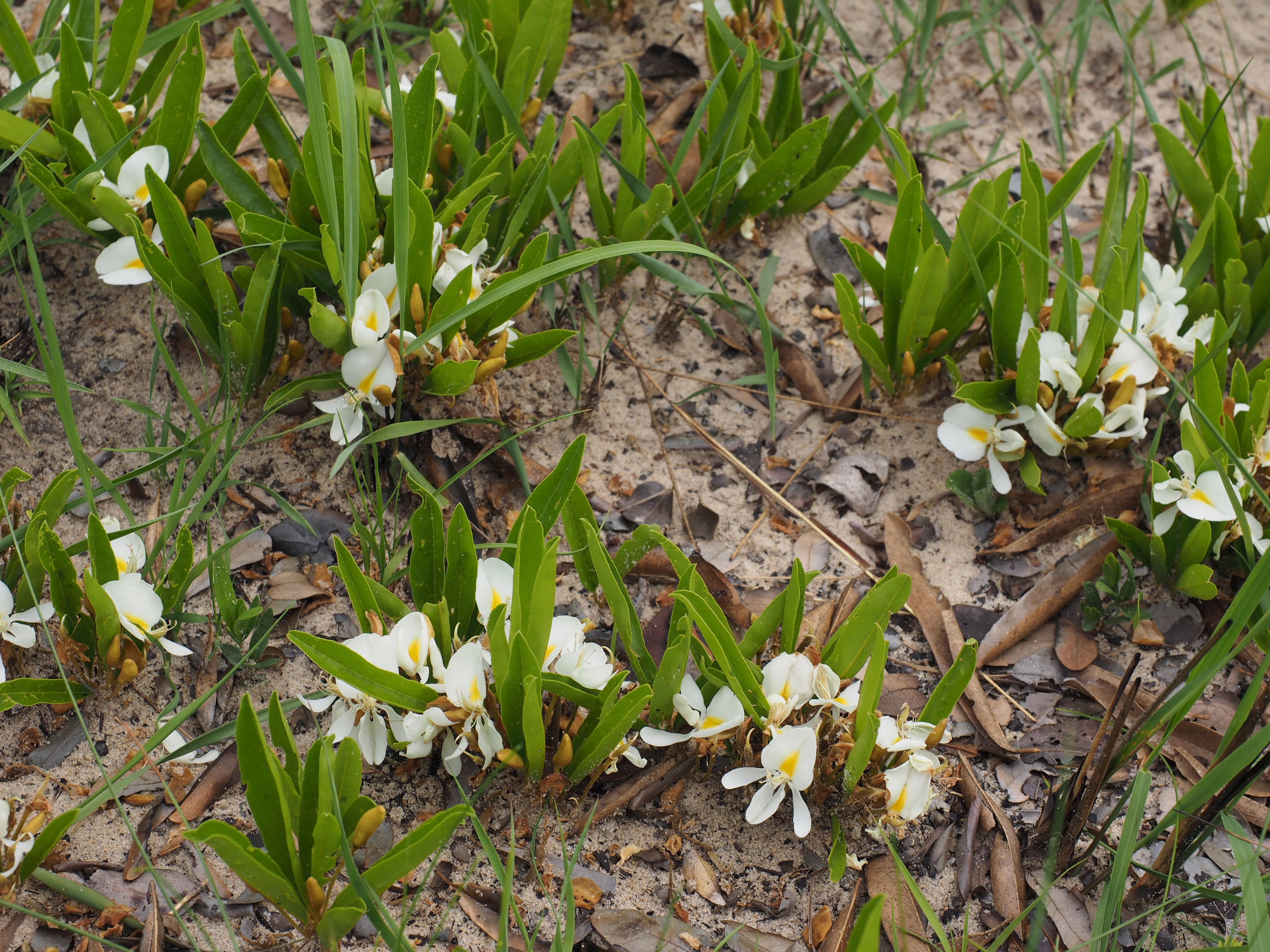Their roots might be buried in soil or sand, but as for the rest of a tree, we generally think of it as sticking out quite a lot. However, in the remote and nutrient-poor Kalahari sands of Angola, life works pretty differently: research in the region has uncovered two new tree species that are nearly entirely underground.
One of the newly discovered species, Cochlospermum adjanyae, belongs to a genus of around 16 different species of trees. The vast majority of the plant is buried underground, but the clue to its existence comes in the form of bright yellow flowers visible above the surface, though it was only seen in flower once. C. adjanyae is also named after Adjany Costa, an Angolan biologist and conservationist who won the UN Young Champions of the Earth Africa prize back in 2019.
The second species has been named in a very literal way – Baphia arenicola, which means “growing on sand”. Like C. adjanyae, the only part of the plant that’s visible is its flowers, although they are mostly white, with a small triangle of yellow towards the base. Though B. arenicola is considered a tree, it’s actually a member of the bean family.

Baphia arenicola, one of the newly described species.
Image credit: © David Goyder, RBG Kew
It’s not that unusual that either species was found mostly underground; many trees in this region of Angola have as much as 90 percent of their body mass under the surface. It’s a smart adaptation to the arid surroundings, allowing them to access the small amount of moisture that ends up underground.
Both species were discovered by Dr David Goyder, an honorary research associate at Royal Botanic Gardens (RBG), Kew, during a National Geographic Expeditions survey. The survey was part of efforts to improve knowledge of plants in the region. “Plant diversity in Angola is poorly documented with very uneven geographic coverage – much of the eastern half of the country and some northern provinces are largely devoid of georeferenced plant collections,” the authors write in a paper describing the new species.
According to a statement from RBG Kew sent to IFLScience, the newly discovered trees are just two of 74 plants discovered by Kew scientists and partners last year and highlight the importance of field studies in understanding and protecting our planet’s plants.
“It is imperative now, more so than ever, that we do everything in our power to go out into the field with our partners and work out which species of plants and fungi we haven’t given a scientific description yet. Without doing so, we risk losing these species without ever even knowing they existed,” said Dr Martin Cheek, senior research leader in RBG Kew’s Africa Team.
Although there’s not enough data to assess the conservation status of C. adjanyae, it’s good news for B. arenicola, which the researchers determined to be in the “Least Concern” group. This likely has something to do with where the trees are found – in a sandy, nutrient-poor environment, which doesn’t exactly encourage the level of human settlement or agricultural development or that could threaten a species.
Speaking of plants discovered in 2023, have you heard of the fiery red orchid that sits atop an Indonesian volcano?
The study is published in the journal PhytoKeys.
Source Link: Two New "Underground" Tree Species Discovered In Kalahari Sands Of Angola